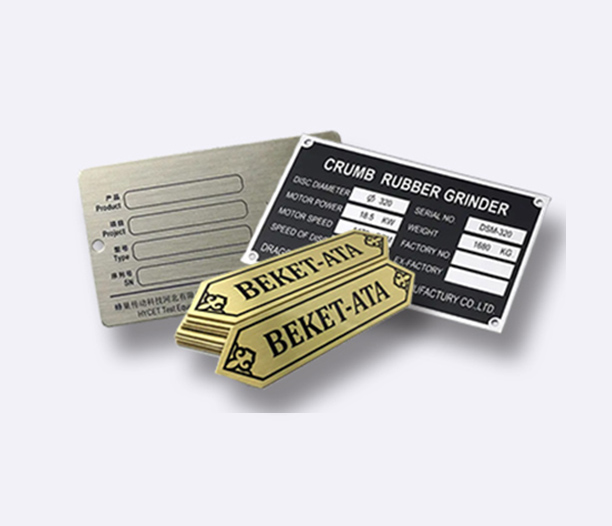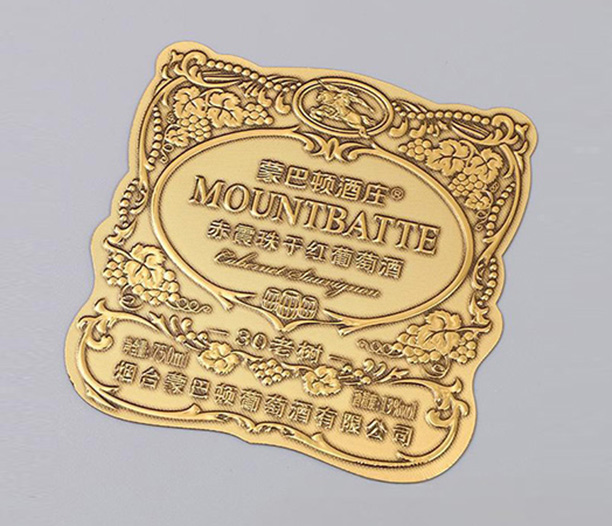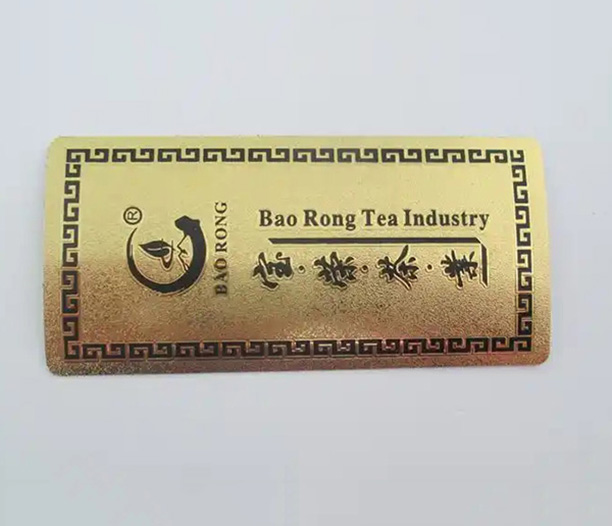When you think of durability and professionalism in identification solutions, what comes to mind? For many industries and individuals, engraved metal nameplates stand out as a timeless choice. These versatile items are more than just labels; they are crafted to withstand harsh environments while conveying critical information with elegance. From industrial machinery to personalized awards, engraved metal nameplates offer a blend of functionality and aesthetics that few alternatives can match. In this article, we’ll explore five key aspects that make these nameplates indispensable, helping you understand why they remain a top pick for businesses and consumers alike. Whether you’re sourcing them for branding, safety, or commemorative purposes, this breakdown will provide valuable insights into their world.
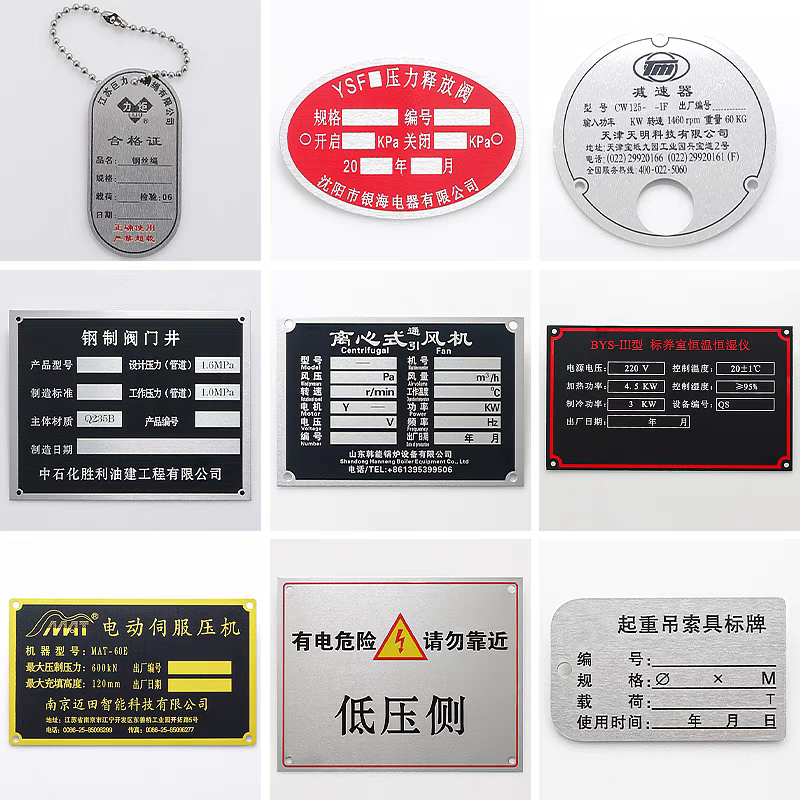
Materials Used in Engraved Metal Nameplates
The foundation of any high-quality engraved metal nameplate lies in the materials selected. Different metals offer unique properties, making them suitable for various applications. Aluminum is a popular choice due to its lightweight nature, corrosion resistance, and affordability. It’s often used in indoor settings or mild outdoor conditions, such as on office equipment or decorative plaques. Stainless steel, on the other hand, excels in harsh environments—think chemical plants or marine equipment—thanks to its exceptional strength and resistance to rust and extreme temperatures. Brass and bronze are favored for their classic, luxurious appearance, commonly seen in awards, historical markers, and high-end consumer products. Each material can be treated with finishes like anodizing or powder coating to enhance durability and color options. By understanding these material characteristics, you can choose engraved metal nameplates that align with your specific needs, whether prioritizing cost, durability, or visual appeal.
The Engraving Process: How Engraved Metal Nameplates Are Made
Creating engraved metal nameplates involves precision techniques that ensure clarity and longevity. Traditional methods like mechanical engraving use cutting tools to etch designs directly into the metal surface, resulting in deep, tactile markings that resist wear. However, modern advancements have introduced laser engraving, which uses focused beams to vaporize material without physical contact. This method allows for intricate details, fine text, and complex logos, making it ideal for custom designs. Another technique is chemical etching, where acids selectively remove metal to form patterns, offering a cost-effective solution for large batches. Each process impacts the final product’s look and functionality; for instance, laser-engraved metal nameplates often feature high contrast and sharp edges, while mechanically engraved ones provide a classic, raised effect. Post-engraving steps might include filling the grooves with enamel for color or applying protective coatings to prevent fading. By delving into these methods, you can appreciate the craftsmanship behind engraved metal nameplates and select a process that meets your aesthetic and functional requirements.
Applications of Engraved Metal Nameplates in Various Industries
Engraved metal nameplates serve a wide range of purposes across multiple sectors, thanks to their adaptability and resilience. In industrial settings, they are used for equipment identification, displaying serial numbers, safety warnings, or operational instructions on machinery. These nameplates endure exposure to oils, chemicals, and abrasion, ensuring information remains legible over time. In the automotive and aerospace industries, they label parts with critical data like model numbers or compliance certifications, aiding in maintenance and traceability. Beyond technical uses, engraved metal nameplates are staples in branding—think company logos on products or building directories—where they project a professional image. The retail and hospitality sectors employ them for decorative signs, menu boards, or commemorative plaques, adding a touch of elegance. Even in personal contexts, such as trophies, jewelry, or pet tags, these nameplates offer a personalized touch. This versatility underscores why engraved metal nameplates are a go-to solution for both functional and aesthetic needs.
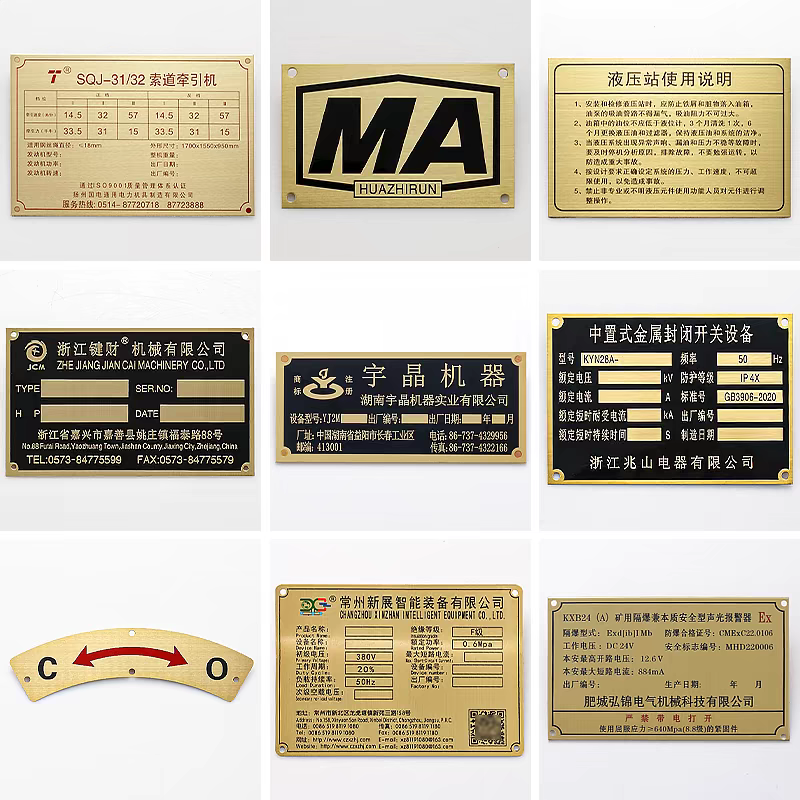
Benefits of Choosing Engraved Metal Nameplates
Opting for engraved metal nameplates brings numerous advantages that set them apart from alternatives like plastic or printed labels. First and foremost is durability; metals like stainless steel or aluminum resist weathering, UV rays, and physical damage, ensuring the engraving remains intact for years. This longevity translates to cost savings, as replacements are rarely needed. Additionally, engraved metal nameplates offer a professional appearance that enhances brand perception—their crisp, permanent markings exude quality and attention to detail. They are also highly customizable in terms of size, shape, font, and color, allowing for unique designs that reflect your identity. From a practical standpoint, these nameplates comply with industry standards for safety and identification, making them reliable in regulated environments. Unlike adhesive options, they can be securely attached with screws or rivets, reducing the risk of detachment. Overall, the combination of robustness, aesthetics, and flexibility makes engraved metal nameplates a smart investment for any application.
Customization Options for Engraved Metal Nameplates
One of the standout features of engraved metal nameplates is the extensive customization available, enabling them to meet precise specifications. Design flexibility starts with the metal type and thickness, which can be tailored to environmental demands. Engraving techniques allow for a variety of fonts, graphics, and layouts—whether you need bold text for visibility or delicate scripts for elegance. Color options are vast; through processes like pantone matching or enamel filling, you can incorporate brand colors or contrasting hues to improve readability. Shapes range from standard rectangles to custom die-cuts, including circles, ovals, or intricate outlines that align with your product’s design. Furthermore, additional features such as mounting holes, adhesive backs, or protective laminates can be integrated for easy installation and enhanced durability. When ordering engraved metal nameplates, it’s essential to provide clear artwork and specifications to ensure the final product matches your vision. This level of personalization ensures that each nameplate not only serves its purpose but also reinforces your unique identity.
Maintenance and Care for Engraved Metal Nameplates
To maximize the lifespan of engraved metal nameplates, proper maintenance is key. Although they are built to last, regular care can prevent issues like tarnishing or dirt buildup. For routine cleaning, use a soft cloth with mild soap and water to wipe the surface gently—avoid abrasive cleaners or scrubbing tools that could scratch the engraving. For stubborn grime, a soft-bristled brush can help dislodge debris without damaging the metal. In corrosive environments, such as coastal areas, periodic inspections for signs of rust or corrosion are advisable; applying a thin layer of wax or specialized metal protectant can provide an extra barrier. If the nameplate has enamel-filled engravings, steer clear of harsh chemicals that might fade the colors. Storage tips include keeping them in a dry, temperate place if not immediately installed. By following these simple steps, you can ensure that your engraved metal nameplates remain legible and attractive for decades, preserving their functionality and appearance.
Engraved metal nameplates are a fusion of artistry and practicality, offering unmatched durability, customization, and versatility across countless uses. By considering factors like materials, engraving processes, applications, benefits, and maintenance, you can make informed decisions that enhance your projects or products. As you explore options for identification or branding, remember that investing in high-quality engraved metal nameplates pays off in the long run through their reliability and professional appeal. If you’re ready to incorporate these elements into your work, start by consulting with experts to bring your ideas to life.
Frequently Asked Questions About Engraved Metal Nameplates
Q1: What are the most common metals used for engraved metal nameplates?
A1: The most common metals include aluminum, stainless steel, brass, and bronze. Aluminum is lightweight and cost-effective, stainless steel offers superior durability against corrosion, while brass and bronze provide a classic, elegant look for decorative applications.
Q2: How long do engraved metal nameplates typically last?
A2: With proper care, engraved metal nameplates can last for decades. Factors like material choice, environment, and maintenance play a role—for instance, stainless steel nameplates in indoor settings may remain intact indefinitely, while those in harsh outdoor conditions might show minimal wear over 10-20 years.
Q3: Can engraved metal nameplates be used outdoors?
A3: Yes, many engraved metal nameplates are designed for outdoor use. Materials like stainless steel or anodized aluminum resist moisture, UV rays, and temperature fluctuations, making them ideal for applications like building signs, equipment labels, or memorial plaques.
Q4: What is the difference between laser engraving and mechanical engraving for metal nameplates?
A4: Laser engraving uses a high-powered beam to etch designs without physical contact, allowing for intricate details and smooth finishes. Mechanical engraving involves cutting tools that physically remove metal, creating deeper, more tactile markings. Laser is often preferred for complex graphics, while mechanical offers a traditional, rugged feel.
Q5: Are there eco-friendly options for engraved metal nameplates?
A5: Absolutely. Many manufacturers use recyclable metals like aluminum or steel, and processes like laser engraving generate less waste compared to traditional methods. Additionally, water-based coatings and lead-free enamels can be applied to reduce environmental impact, making engraved metal nameplates a sustainable choice.



